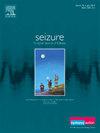成人脑感染后癫痫的死亡率:一项基于登记的全人群研究
IF 2.8
3区 医学
Q2 CLINICAL NEUROLOGY
引用次数: 0
摘要
目的:获得性癫痫与死亡风险增加相关,但这是否延伸到脑感染后的癫痫尚不清楚。我们的目的是估计四种脑感染后癫痫患者的死亡率和死亡原因。方法从瑞典国家患者登记处创建了一个全人群队列,包括2000-2010年因疱疹性脑炎、脑脓肿、其他脑炎或细菌性脑膜炎住院治疗的所有18岁以上患者。Cox比例风险模型用于比较癫痫后死亡的风险比,调整年龄、性别、疾病严重程度和合并症。结果5446例受试者符合纳入标准,其中574例为感染后癫痫。在时间更新和调整的Cox比例风险模型中,癫痫与细菌性脑膜炎(HR 1.7[1.3-2.4])或其他脑炎(HR 2.6[1.9-3.5])存活的患者死亡风险增加相关,但与脑脓肿或疱疹性脑炎无关。死亡的主要原因是血管原因和肿瘤。不同脑感染后癫痫与死亡的相关性差异,再加上癫痫是一种罕见的潜在死亡原因,提示感染后癫痫患者不仅需要最佳的癫痫治疗,还需要特别注意血管合并症。本文章由计算机程序翻译,如有差异,请以英文原文为准。
Mortality in epilepsy following brain infections in adults: A register-based population-wide study
Objective
Acquired epilepsy is associated with increased risk of death, but whether this extends to epilepsy after brain infections is unknown. Our objective was to estimate mortality and causes of death in patients with epilepsy after four types of brain infections.
Methods
A population-wide Swedish cohort was created from the National Patient Registry, including all patients over 18 years of age who received inpatient care in 2000–2010 for herpes encephalitis, brain abscesses, other encephalitis, or bacterial meningitis. Cox proportional hazards modelling was used to compare the hazard ratio for death after epilepsy, adjusting for age, sex, disease severity and comorbidities.
Results
A total of 5446 subjects fulfilled the inclusion criteria, out of which 574 had post-infectious epilepsy. In time-updated and adjusted Cox proportional hazards models, epilepsy was associated with an increased risk of death in patients surviving bacterial meningitis (HR 1.7 [1.3–2.4]) or other encephalitis (HR 2.6 [1.9–3.5]), but not brain abscesses or herpes encephalitis. Dominating causes of death were vascular causes and neoplasms.
Significance
The difference in associations between epilepsy and death after different brain infections, in combination with epilepsy being a rare underlying cause of death, suggests that patients with postinfectious epilepsy may not only need optimal epilepsy treatment, but also careful attention to particularly vascular comorbidities.
求助全文
通过发布文献求助,成功后即可免费获取论文全文。
去求助
来源期刊

Seizure-European Journal of Epilepsy
医学-临床神经学
CiteScore
5.60
自引率
6.70%
发文量
231
审稿时长
34 days
期刊介绍:
Seizure - European Journal of Epilepsy is an international journal owned by Epilepsy Action (the largest member led epilepsy organisation in the UK). It provides a forum for papers on all topics related to epilepsy and seizure disorders.
 求助内容:
求助内容: 应助结果提醒方式:
应助结果提醒方式:


